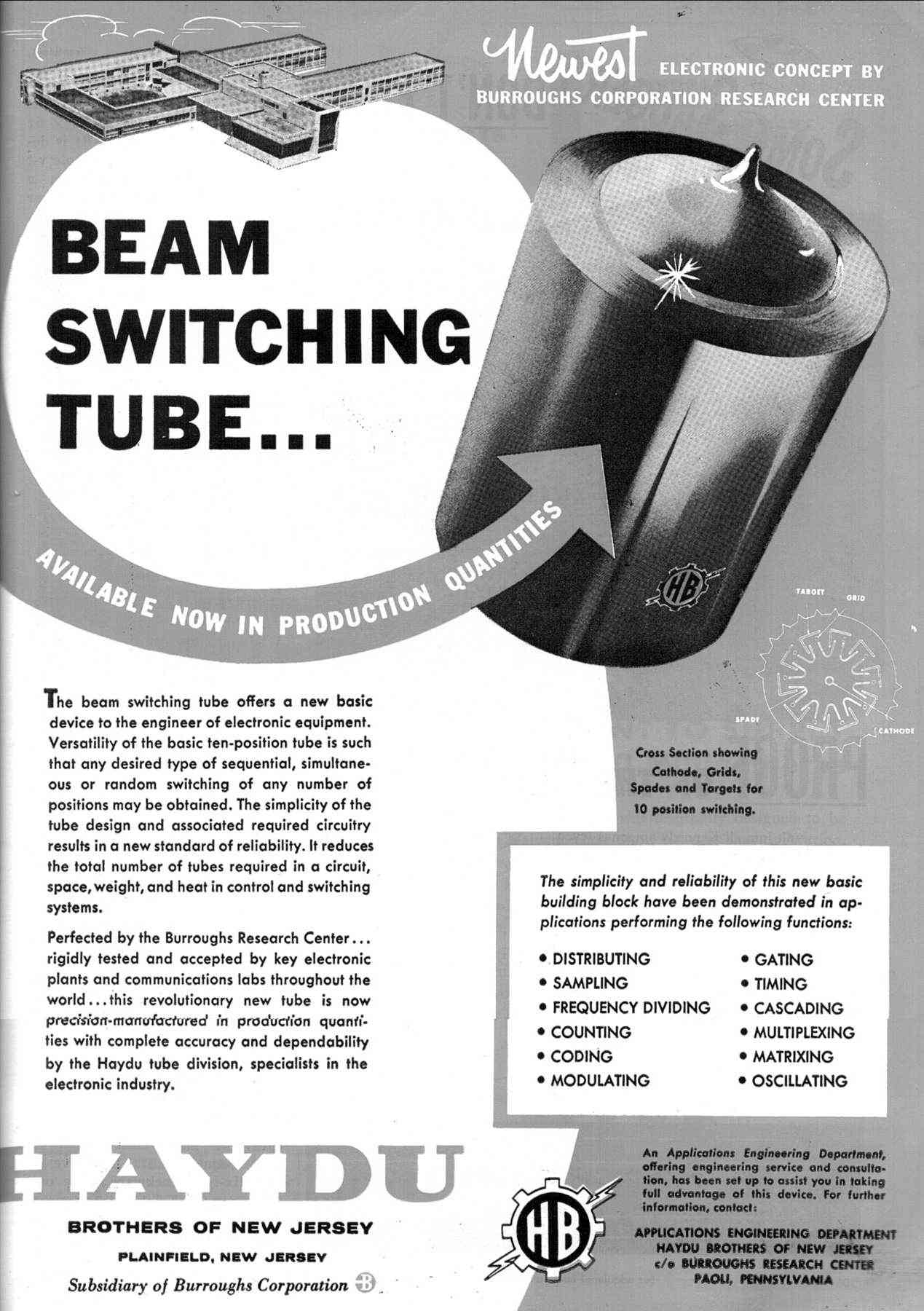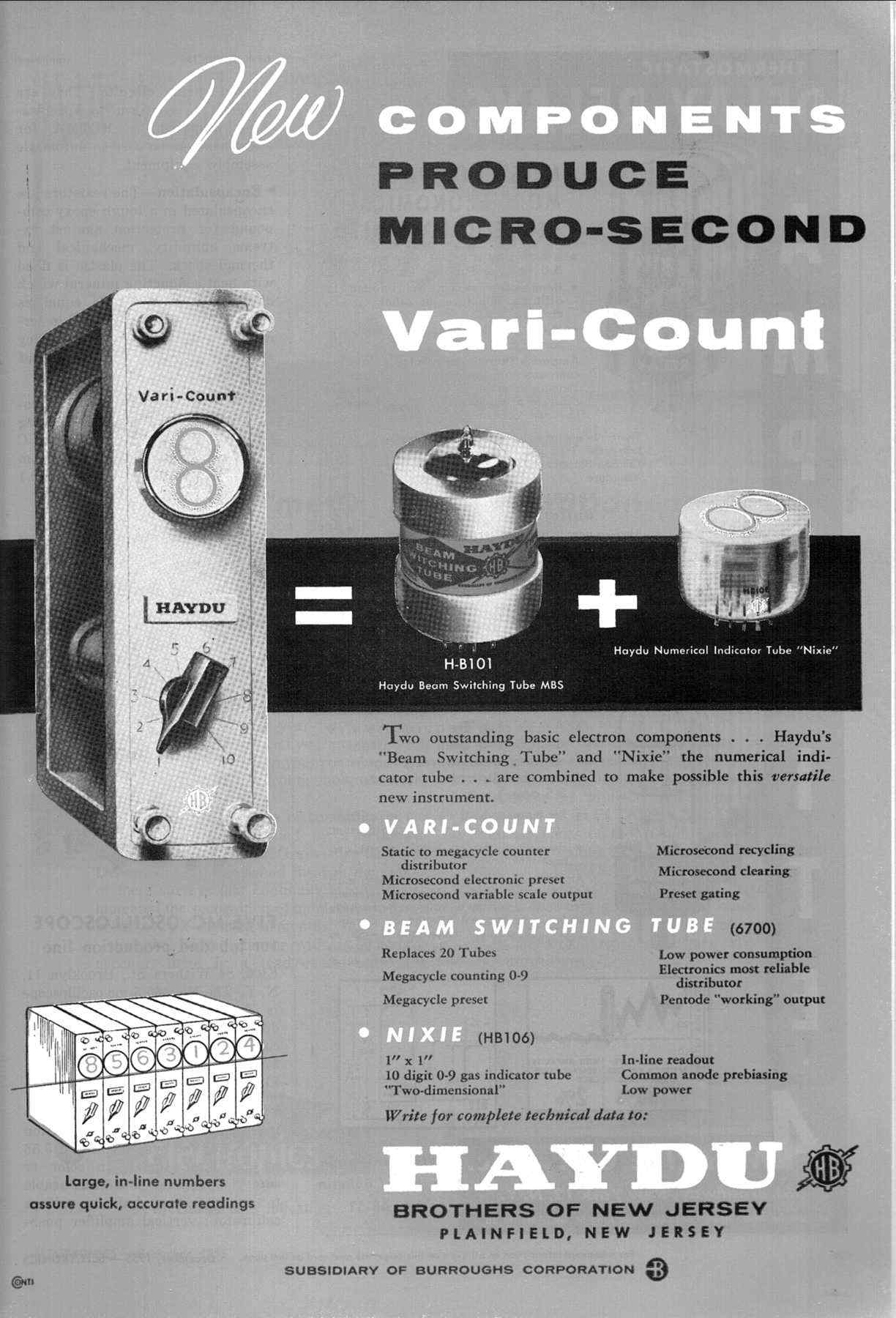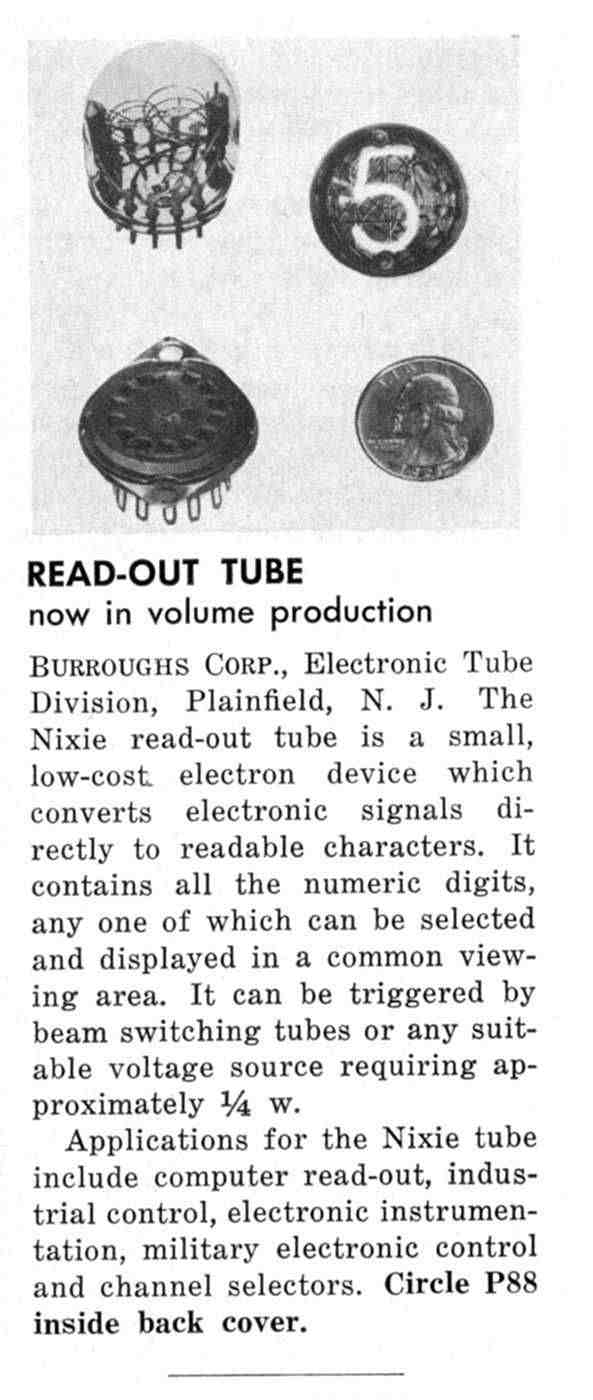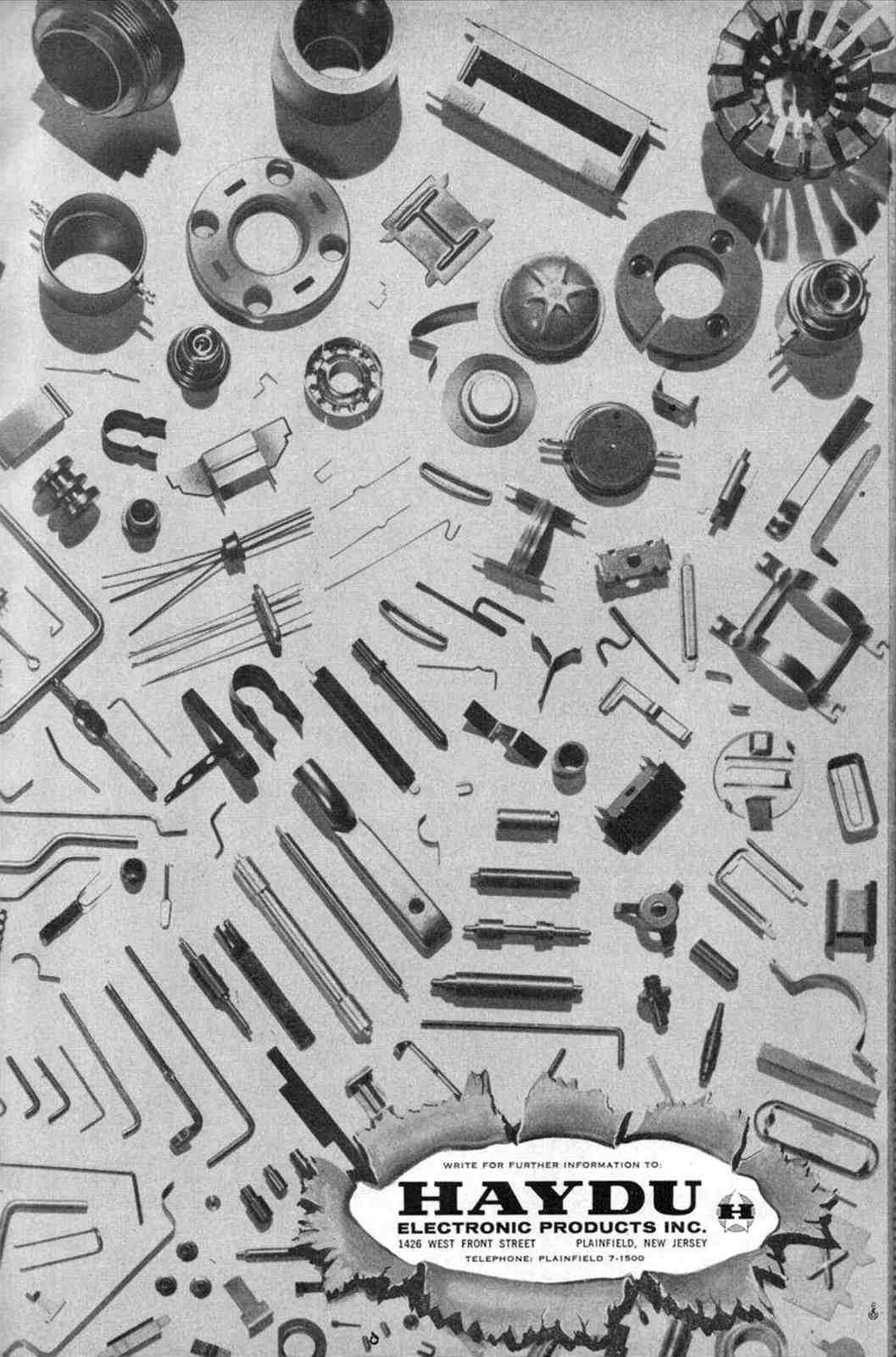Nixie and trochotron: Haydu vs. Burroughs
Nixie and trochotron: Haydu vs. Burroughs

Recently I wrote an article covering the operating principle of the trochotron, a little known vacuum tube. In the article I indicated Haydu Brothers as the manufacturer of the early trochotron counters. This statement was criticized by assertors of the Burroughs leadership in developing such a device, as well as the Nixie indicators.
I tried to find traces of the connection between Haydu Brothers and Burroughs about the introduction the said tubes. I had few ways to access information on that years but a partial collection of ‘Electronics’ magazines from 1951 to 1957 and few sites on the web, in particular the one by the Warren Township site, www warrennj.org/wths/haydu.htm or the site of the successor company, Z. Haydu Manufacturing Company, Hollywood, Fl. Here is what I found.
Burroughs was a very old manufacturer of mechanical business machines. As many other office machine suppliers did in the early fifties, it was migrating to electronic computing solutions. Early advertisements in the magazine Electronics about a line of pulse equipment from its Instruments Division can be found starting from 1953. In November 1953 Electronics also published an article on a PCM coding system developed by the Research Department of the Instrument Division. The system used two special tubes, an analog magnetic deflection data selector and a binary coded decimal counter. The BCD counter operated according to a principle similar to the one we can find in the later commercial trochotrons.
Haydu Brothers, George and Zoltan Haydu, had started their activity in 1937, manufacturing small hardware components for vacuum tube industries, such as General Electric, RCA, Sylvania and Raytheon. During the war their production also included very sophisticated electrode structures, as electron gun components or multi-cavity anode blocks for microwave magnetrons. After the war they expanded their capabilities to the in-house manufacturing of vacuum tubes, mainly for the growing television market. They were able to deliver hardware parts for tubes, assembled vacuum tubes and CRTs and even glass blowing machinery to their customers.
Haydu Brothers employed about 500 people. They were smart enough to manufacture complex electrodes, as the welded vane anode blocks of 725A-like magnetrons. No doubt that they were also small and flexible enough to handle small volume productions or even prototyping orders. Probably this was the reason why Burroughs selected them to build prototypes of the odd switching and indicating structures devised by its research team. When Burroughs decided to have its own tube manufacturing division the simplest and even the safest solution was to buy the entire Haydu plant. The agreement should have contained clauses to grant training and soft transfer of procedures to the new owners. George and Zoltan Haydu still retained the management of the plant, renamed Haydu Brothers, Subsidiary of Burroughs Corporation, from 1954 to 1956.
In 1955 the early line of beam switching tubes and Nixie displays was advertised and sold as Haydu. Nixie displays were even advertised with Haydu codes, as HB-105 and HB-106, where HB stays for Haydu Brothers. The ads below give the idea of the close relationship between the two brands when these devices were introduced.
In 1957 the tube manufacturing plant in Plainfield, N.J., had been definitely transferred to Burroughs. Any reference to the previous owners had been canceled, as appears in the announcement below from Electronics, May 1957:
In the same year George and Zoltan Haydu had opened another plant, as Haydu Electronic Products Inc., at 1426 West Front Street, Plainfield, NJ. They advertised the new plant in Electronics, January 1957, with two pages full of many and many small precision parts.
In the light of the above findings any statements about leadership between the two firms appears futile. Burroughs had put together a group of scientists that devised the innovative structures; Haydu Bros. had the capabilities to build working vacuum tubes from simple drafts. Anyway they both were to be considered as a single subject when the very early trochotron devices were advertised. I like to believe that Burroughs itself gave the due credit to Haydu brothers when launched its advertising campaign under the name of their firm.
Any further contributions will be appreciated.
To thank the Author because you find the post helpful or well done.
No more questions

There are no more questions
fill text: Ommod tatisl iurem ip elisi et lore magnis et venim enisi blaortin vulputpat alis adit adit lum iure
To thank the Author because you find the post helpful or well done.





